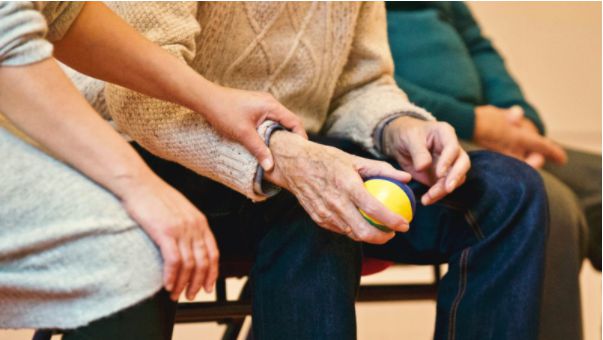Here’s why you need to know how to organize an intervention for addiction treatment. The path through addiction is a treacherous one. It’s one that has many complications. Chief among them is the fact that addicted individuals don’t always know that they are addicted.
“I can quit anytime I want” is a phrase loved ones hear all too frequently. It’s like standing outside a burning house while your family member sits in the living room without even knowing that the house is on fire.
Sometimes, we have to go in and drag that person out of the burning building. We can do that by learning how to organize an intervention.
What Is An Intervention?
There are several methods of intervention, and all of them involve conversations with the addict. These conversations come about with a view to having them enter an addiction treatment program.
The specific technique addiction treatment experts use is a function of the circumstances. In addition, it’s a function of what the interventionist and the family members think will offer the greatest chances of success.
Johnson Model
This method is the one most people picture when they think of interventions. Close friends and family members meet with the addicted person and read prepared statements that describe how addiction affects them. The statements end with a plea for the addict to enter rehab.
Sometimes there is an ultimatum – for example, “If you don’t go to rehab I will no longer financially support you.” This model has been popularized by reality TV shows like Intervention Canada.
These shows deal with a serious topic and can have some educational value. However, they air primarily for entertainment purposes and should not be a guide to planning an intervention.
Family Systemic Intervention
An addict’s problems closely intertwine with those of their family members. In some cases, the addiction can result in abusive behaviour patterns. In other cases, the reverse is true.
Unlike other methods of intervention that are focused on the addict, this one aims at encouraging all family members to seek the specific help that they need.
Brief Intervention
Brief interventions are not usually planned. They involve a short discussion between the addict and a professional such as a doctor or counsellor. This may happen after the addict has been admitted to the hospital for an overdose.
For instance, if a school principal discovers that a student has been using drugs on school premises. Similar circumstances can also call for a brief intervention.
Crisis Intervention
Usually reserved for immediate emergencies, a crisis intervention generally consists of police officers pointing the addict toward treatment for addiction and/or mental illness. This may occur in the event of a suicide attempt or a medical emergency.
Step By Step Guide To Planning An Intervention

Part of learning how to organize and intervention is understanding that every intervention is different. These addictions vary greatly due to individual and family circumstances, what led to the addiction, pre-existing physical and mental health conditions, and a variety of other factors.
Step 1: Assemble The Intervention Team
This is the person or the group of people who will talk with the addict. If you are following the Johnson Model, the team will typically include close friends and family members, and in some cases, a professional interventionist.
One of the most important tips for holding an intervention is to select the team carefully. The goal is to support the addict and not to belittle them. Also, you should only include people you know can stay true to this goal.
Step 2: Do Some Research
We are most afraid of the things we don’t understand. Hence, addiction can seem overwhelming if we do not equip ourselves with knowledge. Before holding an intervention, it is a good idea for all participants to learn about addiction and recovery, and about what addiction to the specific substance entails.
A critical part of this step is finding out about addiction treatment in Canada: what facilities are available, what programs they offer, and crucially, whether they have space available for your loved one.
Step 3: Write Impact Statements
These statements are at the heart of most interventions. Each participant – other than the interventionist – prepares a speech about how the addiction impacts them. The goal is not to judge or attack the addict, it is simply to let them know that their actions are causing harm.
Furthermore, these statements should include any consequences the addict will face if they do not accept treatment. Finally, it should include an offer to support the addict in some specific way if they do accept treatment.
Step 4: Plan And Rehearse The Intervention
Logistically, this means setting a day and time for the intervention. Also, it involves laying out some rules of engagement.
Participants should read their statements together at least once and decide which order to present them in. This way, you can thrash our potential objections.
Step 5: Execute The Plan
On the day of the intervention, follow the plan as closely as possible. Now is not the time to deviate from your prepared statement. If you have an interventionist, they will guide the discussion and diffuse any difficult moments that arise.
As painful as it is, you have to accept the possibility that your addicted loved one will not accept help. If this is the case, you need to prepare to follow through on any consequences you spoke about in your impact statement.
However, if they accept to get help, the next steps should be set in motion immediately. Send the addicted person to rehab immediately, or make the phone call to book them in for treatment.
Related article: What Are The Stages of Addiction Treatment Progression?
What To Consider Before Holding An Intervention

An intervention is not the time or place for spontaneity. You have a much higher chance of succeeding if you follow a well thought out plan. Figuring out how to organize an intervention can be delicate, given the emotions and relationships that are involved.
Some things to bear in mind include the following:
- Participants should avoid words like “alcoholic” and “junkie”. Instead, use terms that respect your loved one as an individual. Do not define them by their addiction.
- Schedule the intervention for a time when the person is likely to be sober and in a good frame of mind. If they show up intoxicated, prepare to wait.
- Don’t invite everyone the person knows – this will lead to an unruly session. Also, the addict will feel as if they are being ganged upon.
- It is natural that participants will show some emotion while they are reading their prepared statements, but strong displays of emotion should be avoided.
- The goal of the intervention is not to shame, humiliate, or attack the person who is addicted. The primary goal is to support the addict by offering help.
- If your impact statement includes consequences for the addict not seeking help, you need to be prepared to follow up on this. For example, if you are planning to tell the addict that you will move out if they do not seek help, start looking for alternative living arrangements. Stating consequences and not following up on them sends the message that there are no consequences.
- Conversely, if your statement includes an offer of support, make sure you can commit to what you are offering.
How To Get Help For An Intervention

There are many benefits to enlisting the services of a professional interventionist. These include the following:
- The interventionist can provide help with planning the intervention. This includes guidance on prepared statements.
- The interventionist provides neutral ground: The addict may be more inclined to participate in the intervention if it is being run by someone who does not know anyone there.
- The interventionist has the training to know when a situation is about to become emotionally charged. Furthermore, they can diffuse tension better than people who have an emotional stake in the outcome.
- The interventionist can, in many cases, arrange for immediate transportation to the rehab facility if the addict accepts help.
- It provides emotional protection for you: At a time when you are struggling with your relationship with the addicted person, it can be too overwhelming to figure out how to organize an intervention yourself.
1000 Islands Addiction Rehab & Treatment Centre provides top quality addiction treatment in Canada, and it all starts with professional intervention services. To get started, give us a call at 855-601-0555.
Related article: Should I Go To an Addiction Treatment Centre during the Pandemic
